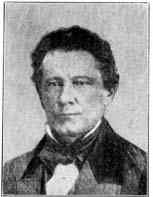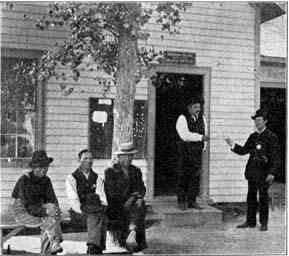|
56
|
SEMI-CENTENNIAL HISTORY OF
NEBRASKA
|
|
painter, who gave his life to the task of
preserving the faces, the costumes, the scenes, of
primitive America, whose books and paintings will always
be classic upon the subjects treated. Catlin came up the
Missouri river in 1832 upon the "Yellowstone" and
wintered with the Mandan Indians in North Dakota. Coming
down the Missouri the next year he stopped with all the
Nebraska tribes, painting representative chiefs,
gathering Indian handiwork and notes upon Indian life. At
Blackbird's grave near Decatur he painted the landscape
and for pay carried away Blackbird's skull to Washington.
At Bellevue he stopped with Indian Agent Daugherty and
preserved for us the picture of Bellevue at that day,
besides many other persons and scenes. In 1833
Maximilian, Prince of Wied, a German nobleman with a
passion for science and travel, came up on the annual
steamboat. He had a party of friends, among them an
artist named Bodmer, who preserved many scenes which
Catlin's brush had missed. On his return to Germany
Maximilian published the story of his travels in a book
of great beauty and value.
The third traveler was
John C. Fremont whose expeditions under authority of the
United States government made him a candidate for the
presidency and a part of western history. On his first
expedition Fremont left the mouth of the Kansas river
June 10, 1842, with a party of twenty-eight men, with
eight two-mule carts and horses to mount the party. Kit
Carson, the famous scout, was guide. The route was the
now familiar one of the Oregon trail to Fort Laramie.
There is now living on the Sioux reservation at Kyle,
South Dakota, one of the earliest of the Canadian fur
traders who came to Nebraska, Mr. J. T. McClsukey (sic),
who

Peter A. Sarpy
remembers seeing Fremont and Kit Carson come to
the post. After reaching the Wind river mountains and
gathering scientific and engineering data Fremont
returned by way of the Pawnee villages on the Loup and
the site of the Nebraska city which now bears his name,
reaching Bellevue post, now in charge of Peter A. Sarpy
on October 1 of the same year. The second Fremont
expedition left the mouth of the Kansas river May 29th,
1843, and followed that stream to the forks where the
Republican and Smoky Hill unite. Here the route was up
the Republican, crossing into Nebraska June 25th and
still up the Republican as far as Prairie Dog Creek in
Harlan county, where the command turned north over the
divide to the South Platte, up that stream to the
mountains and finally to the Pacific.
A parting glance at
Nebraska in the forties of the last century--just before
the train of events started that was to make her name the
one oftenest in the nation's mouth: Bellevue is the
principal white settlement within the state,--a cluster
of log houses between the bluff and the river mostly
occupied by "amalgamated" families--the whole ruled over
by
|





